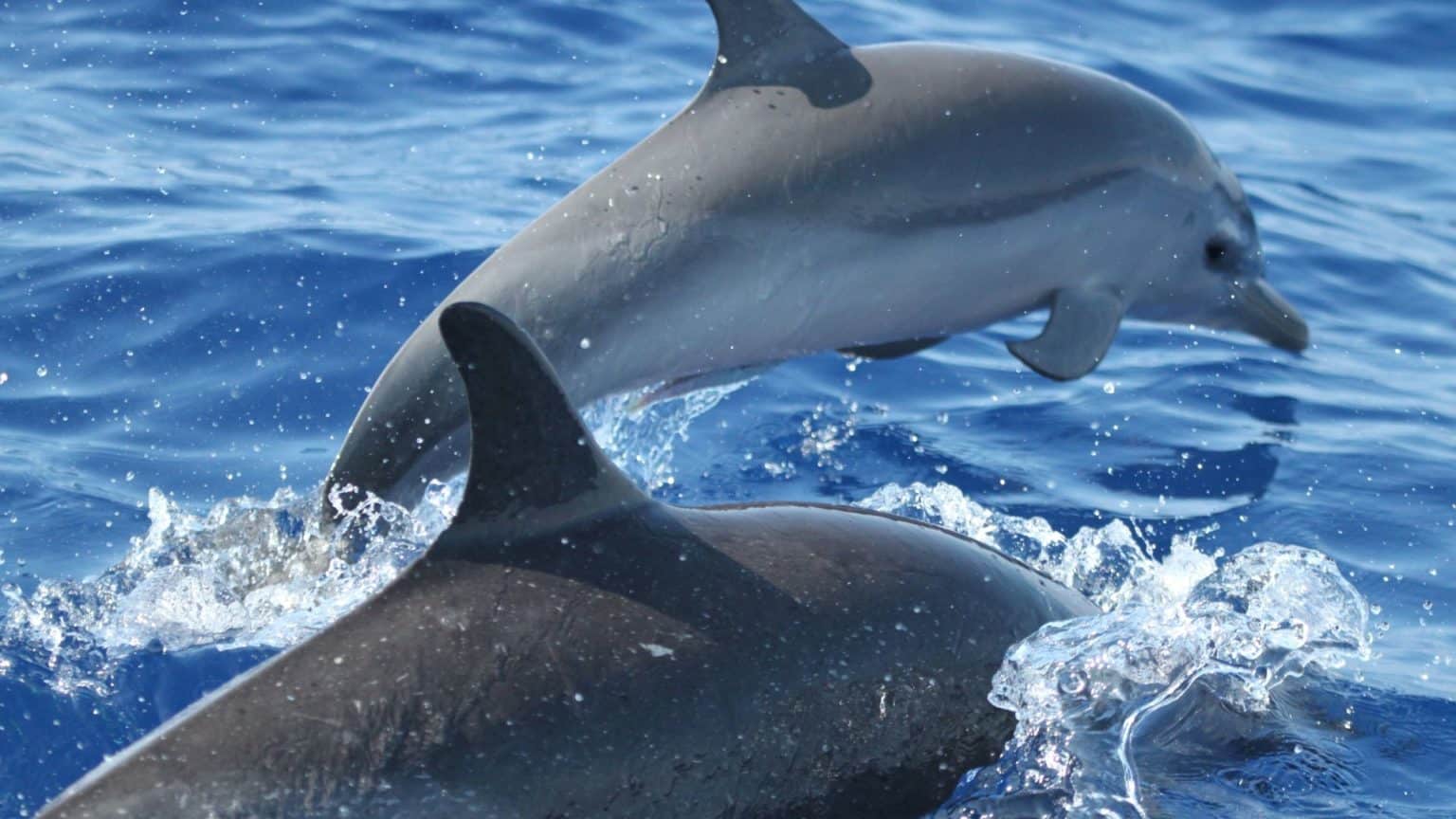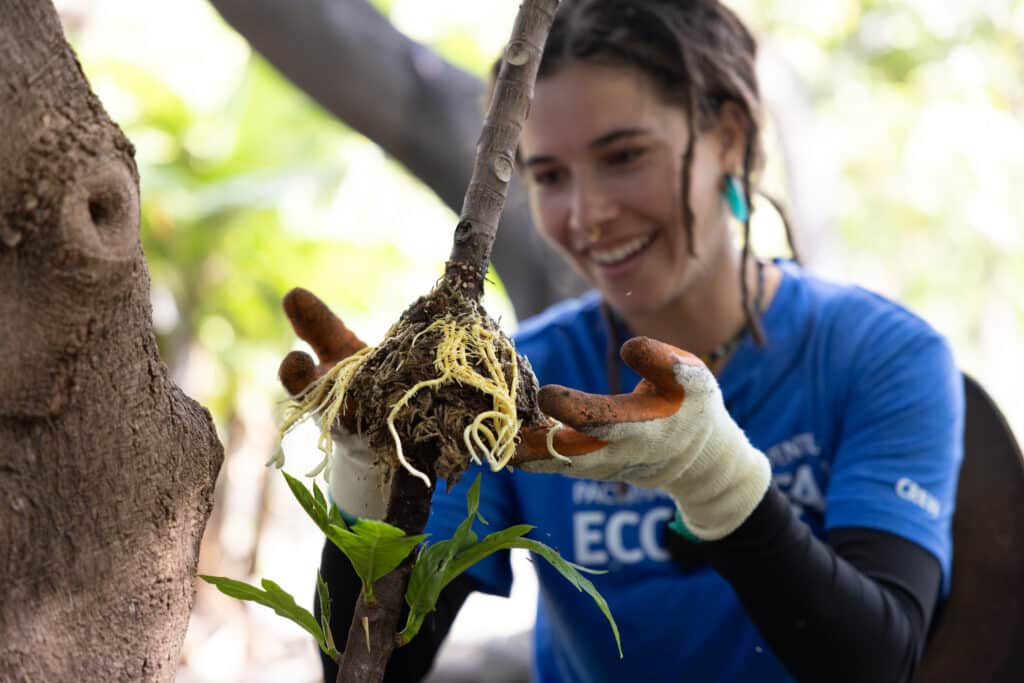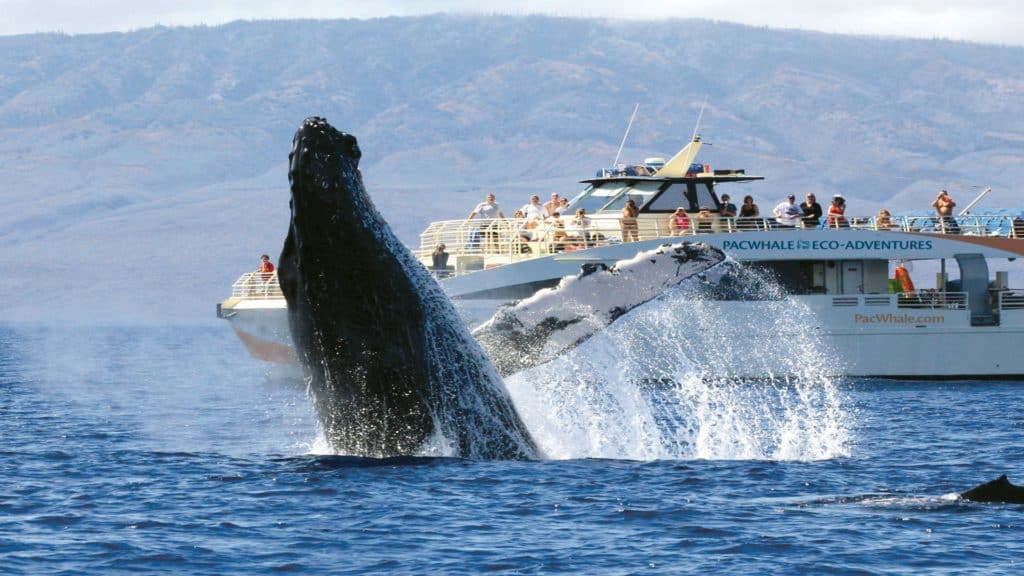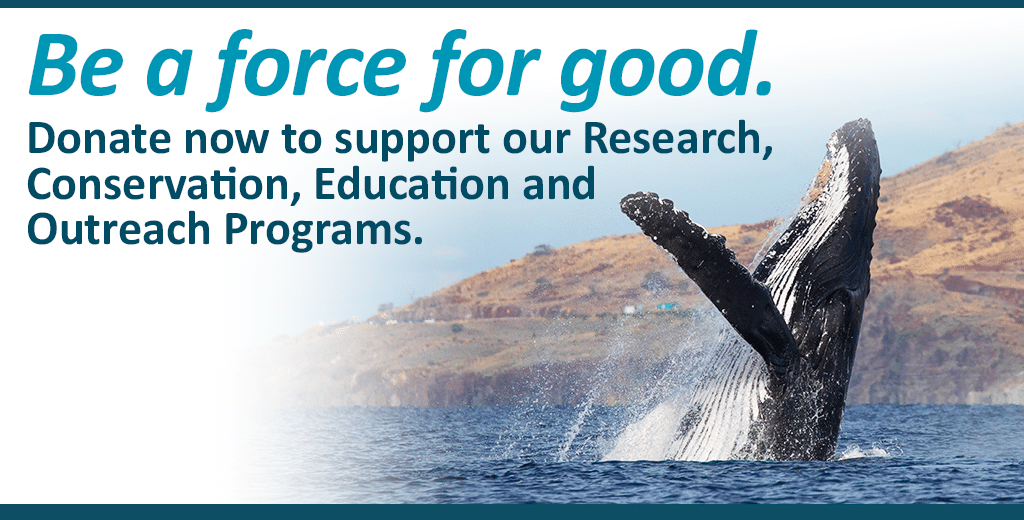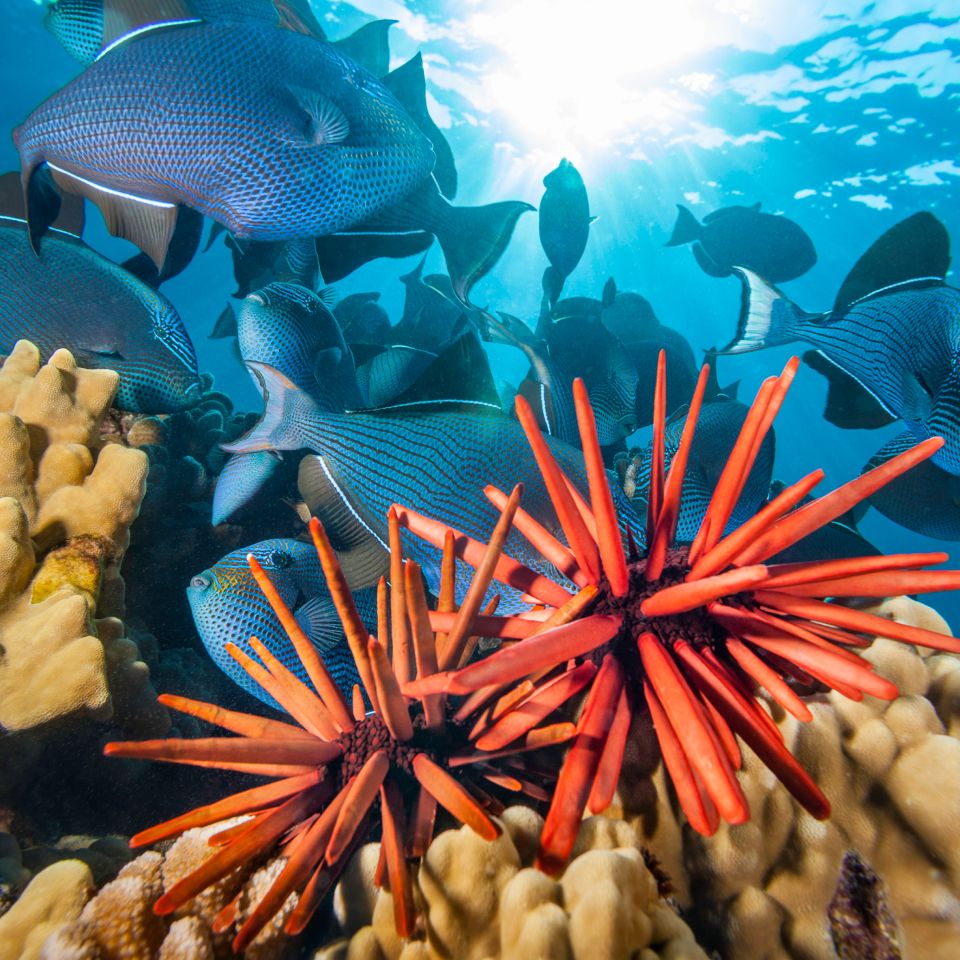
Marine wildlife is essential to planetary health
At the most basic level, healthy marine life means a healthier planet. Organisms, mostly microorganisms, in the ocean produce oxygen and trap carbon—a critical need as we collectively face a changing climate brought on largely by human activity (i.e., fossil fuel emissions/greenhouse gases). When marine life thrives, it also helps shape and protect shorelines with some organisms even contributing to the creation of new habitats, such as coral reefs.
Biodiverse marine environments are better equipped to be productive, adaptable and resilient when challenged by environmental changes. For example, a healthy marine ecosystem can absorb the impact if a species becomes extinct rather than causing widespread turbulence on the entire system.
At Pacific Whale Foundation, we fight and advocate for marine protected areas that preserve important habitats and aid in restoring ocean productivity while prohibiting further degradation. These areas also provide opportunities for vital scientific study in our combined effort to save the world’s oceans and the wildlife within.
Sea Turtles
Sea turtles are reptiles that have adapted to ocean life.
- There are seven species worldwide, all of which are listed as threatened or endangered
- Sea turtle shells grow as they grow
- Like all reptiles, sea turtles are ectothermic (cold-blooded), meaning that their body temperature aligns with their environment causing them to seek out warmer waters
- They live most of their lives in the ocean, except while nesting when females return to the same beach they were born on to lay their eggs
- Green sea turtles are herbivores, eating primarily algae and seagrasses, which give their fat a greenish hue—hence the name
- Hawaiian green sea turtles often come ashore to bask, or rest, before heading back out to sea
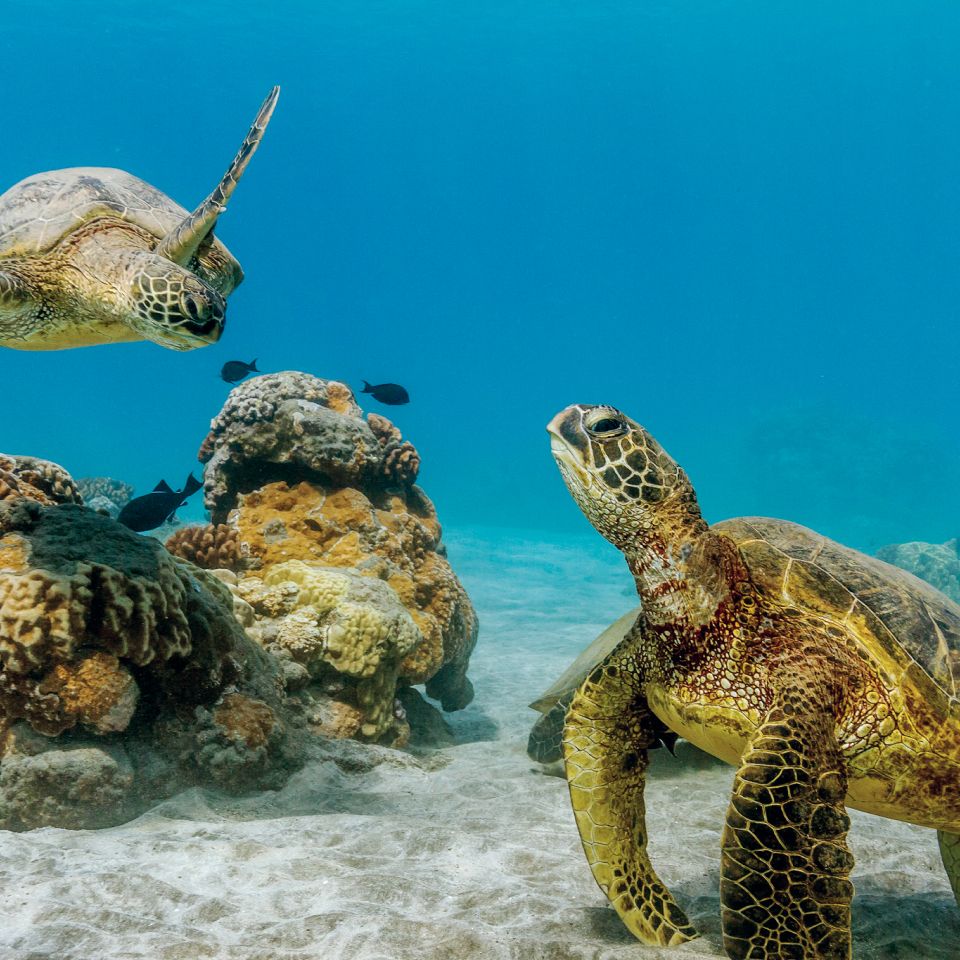
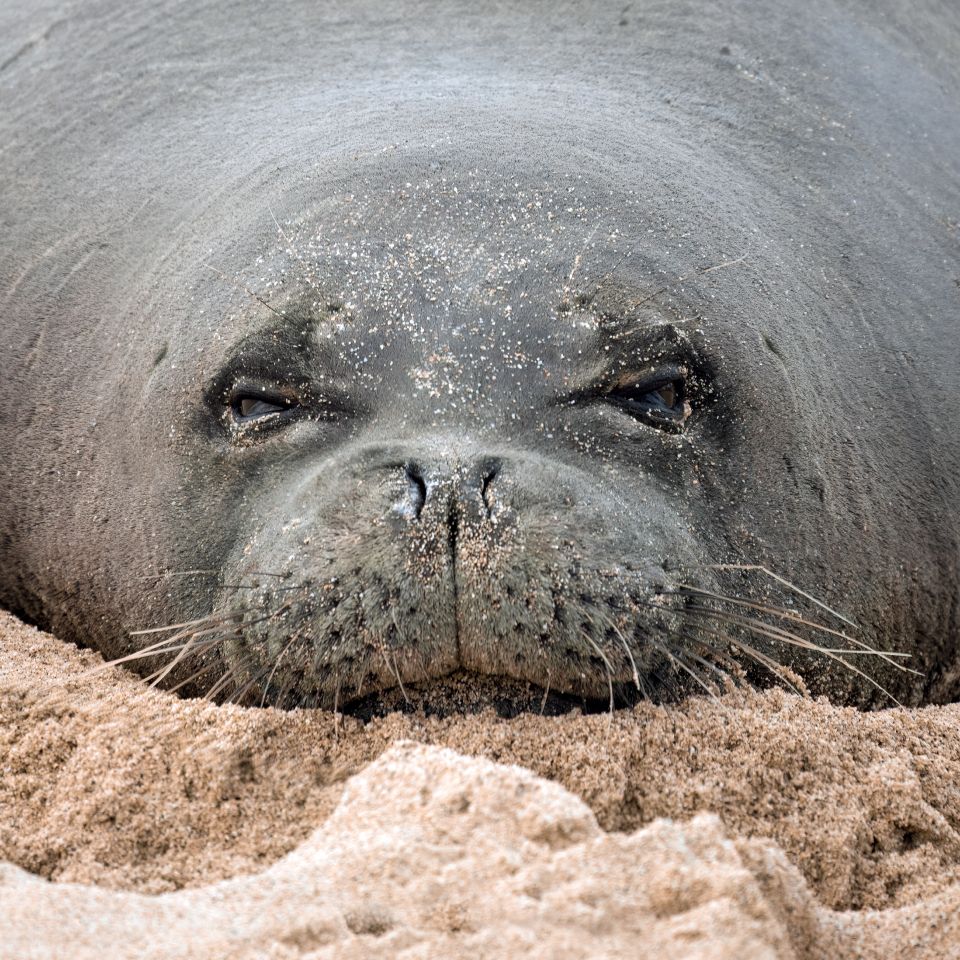
Hawaiian Monk Seals
Hawaiian monk seals are among the most endangered seal species
- An estimated 400 individuals make up the endemic Hawaiian population, with approximately 1,570 remaining worldwide
- Average length is 6–7 feet with weight between 400–600 pounds
- Solitary animals, they spend about two-thirds of their life at sea
- Can hold their breath up to 20 minutes and dive deeper than 1,800 feet
- Lifespan is 70-plus years
Coral
Coral are living organisms crucial to ocean health
- Coral polyps, tiny, soft-bodied animal, are related to jellyfish and sea anemones
- Individuals form colonies, which then combine into larger structures
- Although coral reefs cover less than one percent of the ocean floor, they provide food and shelter for approximately 25% of marine life
- Coral reefs protect shorelines from storms and erosion
- 25-plus species of coral are currently listed as threatened or endangered

Giant Manta Rays
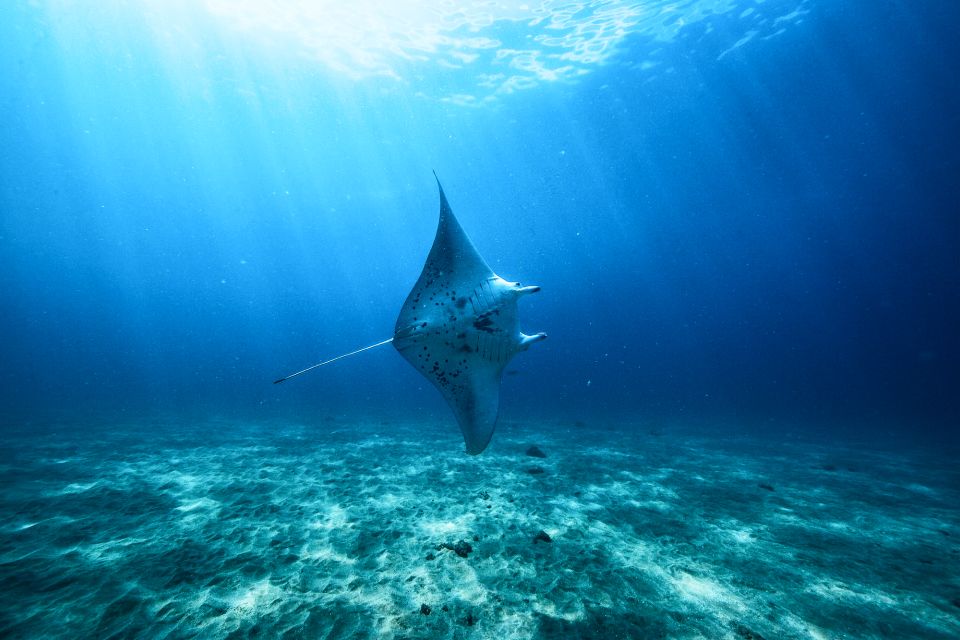
- World’s largest ray with a wingspan of up to 30 feet
- They can weigh close to 5,300 pounds
- Filter feeders, they consume large amounts of zooplankton
- Found in tropical, subtropical and temperate waters, with the largest population believed to inhabit waters off Ecuador (one of PWF’s study sites)
- Vulnerable to human activity, they are listed as threatened with limited recovery potential due to low reproductive output (one pup born every two to three years)
Whale Sharks
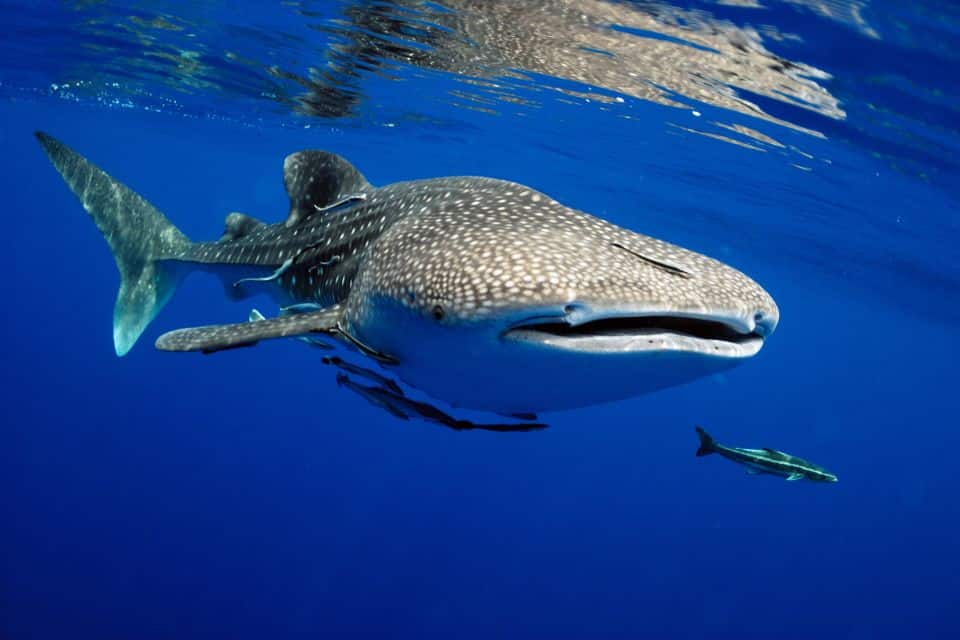
- Whale sharks are the largest oceanic fish
- They can grow up to 40 feet in length and weigh as much as 40 tons (80,000 pounds)
- Identified by patterns of spots and stripes unique to each individual
- Found in tropical, temperate waters
- Lifespan is between 60 and 100 years
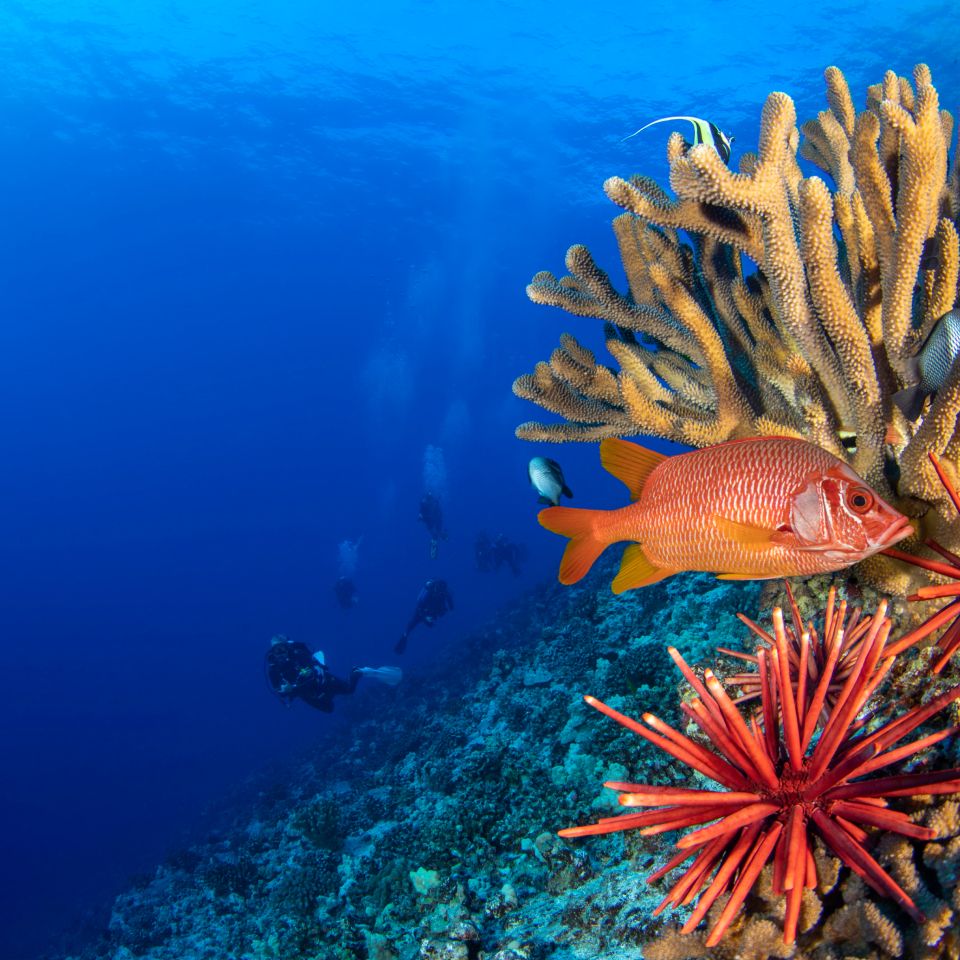
How We’re Helping
Our cetacean research and advocacy positively impacts other sea life
- Marine debris removal through Conservation efforts such as Adopt a Beach and Coastal Debris Monitoring programs
- Advocating for reduced vessel speeds in areas with high concentrations of marine life
- Research studies examining the effects of climate change on ocean ecosystems
- Providing data, commentary and testimony to advance laws and measures protecting the ocean as a whole
Publications
